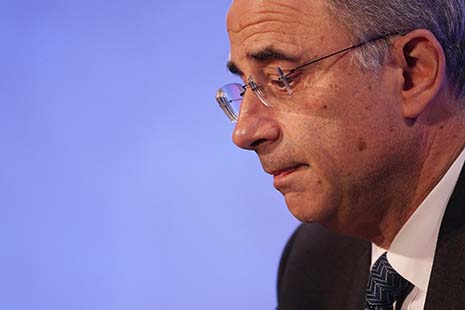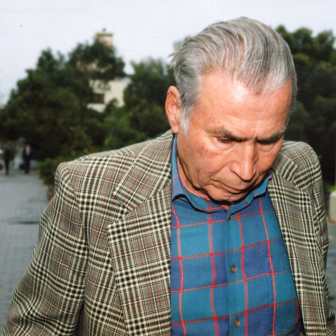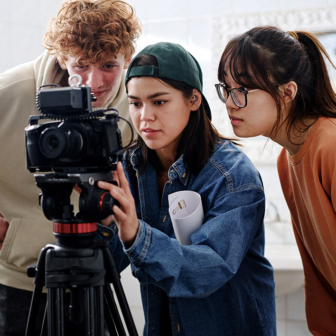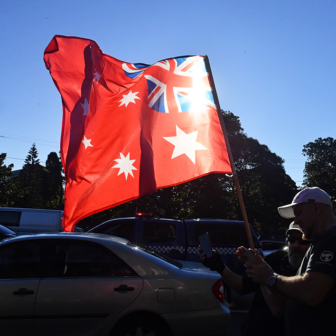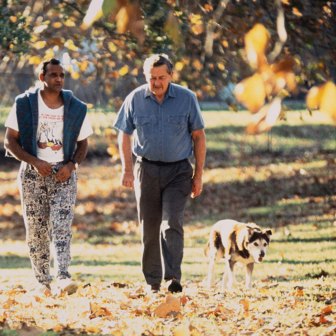IN 2012, we learned some truths. Lance Armstrong was a drug cheat. Jimmy Savile sexually abused young people. Phone hacking at the News of the World was not the work of a single rogue reporter.
As secrets go, these truths were not very secret. A lot of people knew that the official stories were untrue well before the facts became public. The inaccuracy did not stem so much from a lack of truth-seeking as from the coordination of many silences.
We trust some institutions and individuals to find truth for us. Journalists ask us to trust them when they tell us stories. The courts ask us to trust them when they decide who is guilty and who is innocent. Search engines ask us to trust them when they answer our queries. For each of these, 2012 was a challenging year.
Lord Justice Leveson’s inquiry into the culture, practices and ethics of the press in Britain concluded that “there does exist a cultural strand or tendency within a section of the press to practise journalism which on occasion is deliberately, recklessly or negligently inaccurate.” Some inaccuracies were inevitable given the volume and speed of news production, but Leveson found evidence of five main ways that journalists and their editors were unacceptably untruthful.
First, sections of the press deliberately invented and fabricated stories or failed to check the truth of them. Second, headlines could be deliberately misleading. Third, reporters could be carelessly or recklessly inaccurate, especially when reporting fast-moving, high-profile stories. Fourth, sections of the press reported political and social issues inaccurately to fit their paper’s worldview. Finally, science stories were “reported poorly and often inaccurately by much of the press.”
For fabrication, Leveson particularly quoted former Daily Star journalist Richard Peppiatt. “This is not a truth-seeking enterprise,” Peppiatt told the inquiry. “Much of tabloid journalism is not truth-seeking primarily. It’s just a stream of stories.”
Peppiatt recalled a day when the Star was close to deadline without a page-three story. The desperate editor offered 150 quid for a good one and Peppiatt came up with lads’ mag favourite Kelly Brook seeing a hypnotherapist to help her cut the time she took to get ready to go out. “I made it up,” Peppiatt said. “At 6 pm and staring at a blank page I simply plucked it from my arse.” (Star witnesses denied this and said Peppiatt was disaffected, “unhappy after he was passed over for several staff positions.”) Other inquiry witnesses spoke of “fabricating quotations to push a particular line with regard to a story and then find a willing contact to ‘own’ the quote.” Piers Morgan admitted altering a photograph digitally to show Princess Diana and Dodi al-Fayed kissing.
For deliberately misleading headlines, Leveson cited front pages pointing to “exclusive interviews” that weren’t exclusive and sometimes weren’t even interviews – or claimed that Jennifer Aniston had revealed “I’m having a baby!” when the story below it said Aniston was only thinking about having a baby. The Daily Telegraph published a story about the introduction of a requirement for balloons to carry a warning under the headline “Children to be banned from blowing up balloons, under EU safety rules.”
In the case of “fast-moving and high-profile stories” – the ones that are followed by all the press, and often involve crime or a famous individual – Leveson thought “there is a tendency amongst large parts of the press to disregard the rule book.” Nick Davies, the Guardian journalist who broke the story about the scale of the News of the World phone hacking, told the inquiry about another story in which police were reported to have evidence that children had been killed and buried in the ruins of an old children’s home on the isle of Jersey. “The evidence for the truth of that proposition,” he said, was “screaming its falsehood.”
According to Davies, “The police said, ‘We have been looking into the ruins of this building and we have found a cellar which is exactly like the cellar which is described by our survivor witnesses.’ It’s ‘very dark.’ Cellars are dark. It means nothing. Then they said, ‘And in this cellar we found a bath,’ and it’s quite alarming, this, the sort of hints of torturing. ‘It’s actually bolted to the floor,’ as though everybody’s bath was mobile.’”
But by then “the problem… on all newspapers across the whole spectrum is it’s too good a story to knock down… A reporter from any paper is sent out to Jersey to follow up on this story. The reporter who rings up and says, ‘Actually, this is crap, there’s just no evidence for this at all,’ they will not be thanked. It’s a great story.”
On reporting political and social issues inaccurately to fit a paper’s worldview, Leveson did not try to outlaw all “blurring of fact and comment,” which the Editors’ Code prohibits and former prime ministers Blair and Brown condemned. He thought it “an inevitable part of press reporting in the twenty-first century… first, because purely factual reporting devoid of all opinion is, to all practical purposes, impossible… Secondly, because in a world of twenty-four-hour television and online news, readers expect newspapers to provide something more than pure news.”
What he did think was harmful and worthy of criticism was “prioritising the worldview of a title over the accuracy of a story.” Leveson highlighted four main problem areas: disability and social welfare benefits, criminal justice issues, immigration and Britain’s role in Europe.
The Daily Mail and Daily Express ran “Immigration soars 20 per cent” headlines over separate articles about annual immigration figures that made clear immigration had remained stable. It was net migration that had increased by 20 per cent because emigration had fallen. Among the “spongers” in a Sun article about a report on sickness benefits, “Fit as a Fiddler: ‘Sick’ Spongers Could Start Work Right Now,” were people considered unsuitable for immediate work, but potentially suitable for work in the future. These included people undergoing chemotherapy or dialysis treatment, hospital in-patients, and those suffering from uncontrollable, life-threatening diseases.
On science stories, Leveson criticised “false balance” – where the scientific view of a very small minority is given prominence, implying a significant conflict of opinion within the scientific community – and the sensationalising of “scares” and “breakthroughs.” So a Nature paper modelling climate change projected warming between 2 and 11 degrees but emphasised that most models show warming around 2 degrees: newspapers used 11 degrees in their headlines. Another Nature story reported on a drug discovered on Easter Island that may extend life in mice but is harmful to humans: newspaper headlines included “Scientists discover Easter Island ‘fountain of youth’ drug that can extend life by ten years.”
LEVESON, the lawyer and judge, did what lawyers and judges do to get at the truth. They read documents, call witnesses and get them to swear to tell the truth and nothing but. They weigh the admissible evidence, draw conclusions, make decisions, and write judgements and reports.
When juries are involved, judges give them careful instructions about the evidence and methods they can use to arrive at their view of the truth. No independent research, no chatting to family and friends, and definitely no contact with witnesses or other people associated with the case. All are forms of jury misconduct that can lead to trials being aborted.
In the social media age, those kinds of restrictions are proving especially challenging. Melbourne saw it when Jill Meagher disappeared after a night out in Brunswick. Once her body was discovered and a suspect arrested, her husband and the police warned publicly of the dangers that truth-seeking and sharing on social media could pose to the later job of truth-seeking by a jury in a court room.
A recent pilot study of jury use of new media by the United States’ National Center for State Courts explored this “change to the very nature of how people engage in truth finding” and the challenge it poses for what the Kennedy School’s Christopher E. Stone called “an institution that is used to insisting on its own ways of knowing things, ways that are different from what ordinary people do.”
While cautious about its own limits, the pilot study found few jurors reporting misconduct of any kind, including independent internet research. Substantial proportions, however, did not recall the judge’s instructions and believed such research was permissible. A sizeable proportion of actual and prospective jurors “indicated a desire to use the internet to obtain information relevant to the trial,” and a significant proportion of jurors said they would “be unable to refrain from internet use for the duration of a trial.”
The researchers concluded that juror misconduct involving new media currently was “less than one might imagine based on the number of recent news media accounts of jurors run amok.” But they were less optimistic about the future.
“The vast majority of trial jurors are already exceptionally wired-in, having both the technological access and the practical experience to use these communication devices effortlessly…,” they wrote. “As younger cohorts join the jury pool… judges and lawyers… can expect to see jurors’ desire to use these tools increase… They will have to take more effective steps to convince jurors to forgo these tools in the interest of fairness to litigants. A key factor will be the degree to which jurors continue to believe that the testimony of witnesses, especially expert witnesses hired by the parties, is more compelling evidence than what they can uncover on their own through information available to them via the internet.”
THE tool that Australians use more than any other to find information on the internet struck a challenge of its own in 2012. Google was found by the Full Federal Court to have engaged in misleading and deceptive conduct in presenting its search results.
The Australian Competition and Consumer Commission argued that internet users are misled when an advertiser uses the names of its competitors as key words to attract visitors via Google’s AdWords. The court agreed both that consumers could be misled and that the misleading representations were made by Google, not the advertisers, as Google argued. The key words may be selected by the advertiser, perhaps with input by Google, but “the enquiry is made of Google and it is Google’s response which is misleading,” said the court.
Google was granted leave to appeal to the High Court, which heard the case in September but has not yet handed down its decision.
Truth-seeking is expected to continue in 2013. •
